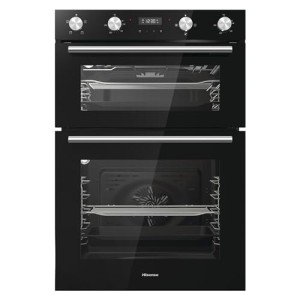The Rise of Built-in Ovens: Enhancing Modern Kitchens
In the ever-evolving world of home enhancement, built-in ovens have emerged as a staple in contemporary kitchen design. These appliances not just use a sleek and smooth visual however also contribute substantially to the performance and effectiveness of home cooking. This short article digs into the different elements of built-in ovens, including their advantages, types, installation considerations, and upkeep, along with often asked concerns to supply a thorough summary.
What is a Built-in Oven?
A built-in oven is an appliance developed to be installed into kitchen cabinetry, offering it a structured appearance and releasing up counter space. Unlike traditional freestanding ovens, which stand alone and are often bulky, built-in ovens fit flush with cabinetry for a more integrated appearance. They are offered in numerous sizes, styles, and functions, dealing with a large range of culinary needs and kitchen designs.
Benefits of Built-in Ovens
Built-in ovens included various benefits that make them attractive to house owners. Below are a few of the essential advantages:
- Space Efficiency: Built-in ovens conserve counter space while enhancing kitchen designs.
- Personalized Design: They can be integrated into kitchen cabinetry, permitting homeowners to tailor visual appeals according to individual taste.
- Enhanced Performance: Many built-in ovens come equipped with advanced cooking innovations, permitting much better heat distribution and faster cooking times.
- Availability: Their setup at eye level makes it easier to inspect food without flexing down, supplying greater benefit and security.
- Resale Value: A contemporary, properly designed kitchen can boost home value, making built-in ovens a financial investment worth considering.
Kinds Of Built-in Ovens
Built-in ovens can be classified based on their style and function. The following list lays out the common types of built-in ovens available on the marketplace:
- Single Ovens: A basic model that includes one cooking compartment.
- Double Ovens: These come with two separate compartments, which enable cooking multiple dishes at different temperature levels.
- Wall Ovens: Installed into the wall for a space-saving solution, these ovens use convenience and accessibility and can be either single or double.
- Steam Ovens: These make use of steam for moist cooking and are typically favored for healthier meal preparation.
- Convection Ovens: Designed with a fan that distributes hot air, making sure even cooking and browning.
| Type | Description | Suitable For |
|---|---|---|
| Single Oven | One cooking compartment for basic baking and roasting. | Small households and kitchens. |
| Double Oven | 2 compartments for simultaneous cooking of different dishes. | Large households with varied menus. |
| Wall Oven | Built into the wall for easy gain access to. | Space-conscious kitchens. |
| Steam Oven | Cooks using steam for healthier options. | Health-conscious people. |
| Convection Oven | Circulates hot air for even cooking and faster results. | Baking enthusiasts and chefs. |
Setup Considerations
Picking to set up a built-in oven involves numerous factors to consider to guarantee that it fits effortlessly within the kitchen. Important elements consist of:
- Cabinet Dimensions: Accurate measurement of the cabinet area required for the oven is critical for an appropriate fit.
- Power Supply: Built-in ovens usually require a dedicated power supply; speaking with a licensed electrician might be necessary.
- Ventilation: Ensure that the oven's ventilation requirements are met to promote safe operation.
- Regional Building Codes: Compliance with regional codes is essential when setting up any kitchen appliance.
It's highly recommended that setup be carried out by specialists to guarantee safety and adherence to manufacturer specs.
Maintenance of Built-in Ovens
Preserving built-in ovens is vital to guarantee their durability and operation. Below are some suggestions for efficient maintenance:
- Regular Cleaning: Wipe down surface areas after each use to prevent build-up; think about self-cleaning choices if available.
- Check Seals: Inspect the oven door seals regularly for wear and tear to maintain performance and prevent heat loss.
- Calibrate Temperature: Occasionally check and adjust oven temperature level settings if cooking outcomes are inconsistent.
- Professional Servicing: Schedule regular maintenance with qualified specialists for electrical components and deeper cleaning.
Regularly Asked Questions (FAQs)
Q1: How do I pick the right size built-in oven for my kitchen?
A1: Measure the readily available cabinet space and consider the cooking practices of your household. Single or double ovens prevail options based on meal preparation requirements.
Q2: Are built-in ovens more energy-efficient than freestanding ones?
A2: Built-in ovens can be more energy-efficient due to much better insulation and advanced cooking innovation; however, actual performance depends upon the specific design and use.
Q3: Can built-in ovens be installed anywhere in the kitchen?
A3: Built-in ovens require specific cabinetry and may require a devoted source of power, so preparing their placement thoroughly within the kitchen layout is important.
Q4: What kind of maintenance do built-in ovens need?
A4: Regular cleaning, examining door seals, calibrating temperature levels, and professional servicing as needed are all elements of proper maintenance.
Built-in ovens are an amazing addition to contemporary cooking areas, providing both aesthetic and useful benefits. Their space-saving style, customizable choices, and advanced functions cater to diverse cooking requirements. When thinking about a built-in oven, house owners ought to take into account their particular cooking choices, kitchen layout, and upkeep abilities. By doing so, integrated ovens and hobs would be making an important investment in their home, increasing both functionality and style.

